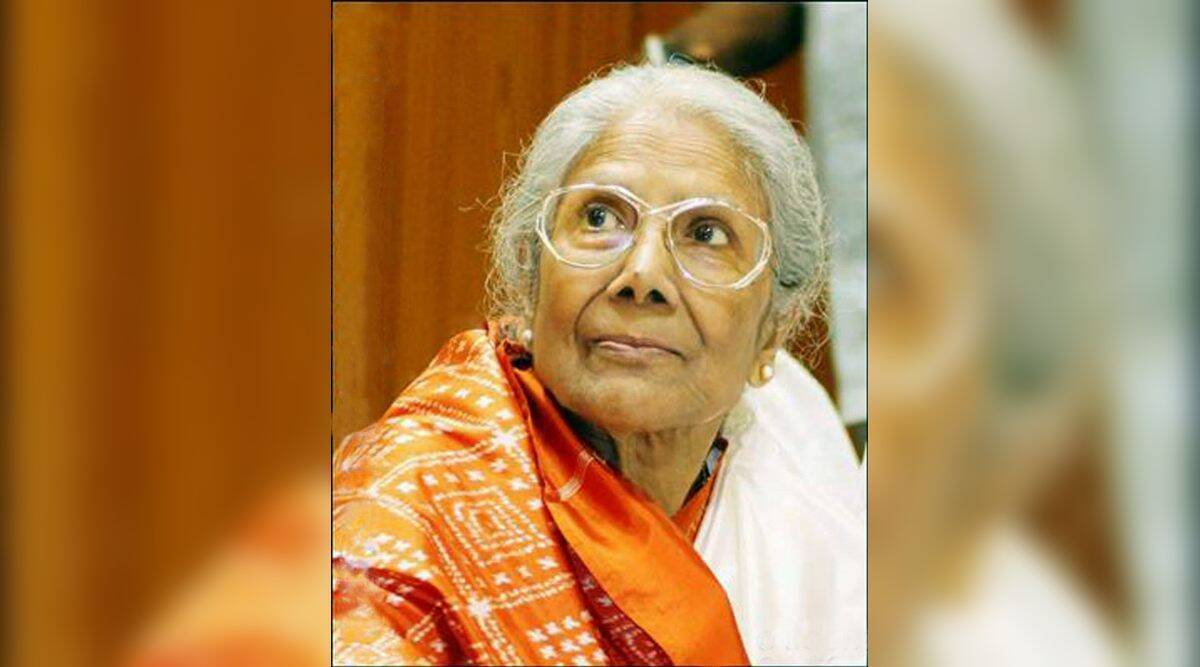 Sandhya Mukherjee (Photo: Facbeook @Sandhya Mukhopadhyay)
Sandhya Mukherjee (Photo: Facbeook @Sandhya Mukhopadhyay) Sandhya Mukherjee came to my listening universe inconspicuously. Growing up as a probashi Bengali in Delhi in the pre-digital age, I didn’t have Mukherjee as part of my early listening experience in the way Lata Mangeshkar or Geeta Dutt had been. I was two years away from hitting my teens when Mukherjee’s voice — unmistakable for its lilt and lalitya, Sanskrit/Bengali for sweetness or charm — entered my world as we moved to Chittaranjan Park in south Delhi. No Durga Puja went by without listening to songs by two legendary Mukherjees — Sandhya and Hemanta — being blared on loudspeakers. The pandals of the late 1980s were venues for the screening of black-and-white Bengali films on giant projectors. This was also when I found Sandhya Mukherjee’s voice merging with the screen persona of Suchitra Sen, even as Hemanta Mukherjee’s did with Uttam Kumar’s who often played her romantic interest. As I spent the past few days listening to the breathtakingly wide range of songs Mukherjee sang in her long and illustrious career, I found that the ability to adapt — to artistic idiosyncrasies, situational peculiarities and the basic demands of a piece of composition — was what made her such a versatile and gifted artist.
Recently, I stumbled upon some near-forgotten gems — a whole stack of Hindi songs in her voice. Between 1950 and 1951, when she went to Bombay answering composer S D Burman’s call, Mukherjee sang in as many as 17 Hindi films before returning to Calcutta and becoming a household name. One of the biggest appeals of Mukherjee’s singing is the effortlessness with which she glides through different musical genres. She has sung some of the most memorable romantic songs, which she injects with sensuous dreaminess or playful vibrancy, depending on the mood the words intend to convey. In songs like “Ke tumi amare daako” and “Ei je kachhe daaka”, Mukherjee imbues the notes with a quasi-mysterious air while retaining remarkable control. She’s equally at ease singing “Ghiri ghiri aayi”, a raag-based thumri in the film Antony Firingee, or in Kamallata, rendering Ham ekakini, tahe abhagini in kirtan style. In her ease in traversing this multitude of musical landscapes — film songs, Nazrulgeeti, classical and semi classical compositions, Rabindrasangeet, folk music — Mukherjee went beyond each style and made it her own. Each of her songs in Antony Firingee, a film in which she sang opposite Manna Dey, known for his classical command, remains a testament to her ability to combine skill and emotive persuasiveness. Whether it is “Tuhun mama mono prano hey” or “Champa chameli, golaperi baagey” or “Ami je jalsaghare,” every song Mukherjee sang under composer Anil Bagchi’s direction, bears the stamp of this fluidity.
Mukherjee belonged to an era when the artist fraternity often came together to lend support to social and political causes. In 1971, when refugees from the erstwhile East Pakistan flooded Calcutta, Mukherjee played a leading role in raising funds and creating global awareness. She sang “Bongobondhu phire ele”, written and composed to celebrate Sheikh Mujibur Rahman’s release from the prison in Pakistan in 1972. The song aired on All India Radio in January that year. After the creation of Bangladeshin February 1972, Mukherjee was invited as a main guest to the celebrations in Dhaka.
Every autumn, just before the Bengali community gets into the Durga puja frenzy comes Mahalaya, the day inaugurating the festival. Bengalis across the world wake up to the notes of Mahishasuramarddini, a musical that plays at the crack of dawn on radio (and now on digital devices). From the stellar lineup of singers rises the voice of Sandhya Mukherjee, singing “Bimaney bimaney alokero gaane jaagilo dhoni” (“Riding air chariots, notes of light take flight in song”). Despite her passing, Mukherjee’s aloker gaan — bright notes —will keep taking flight.
(Ghosh is a writer and translator, and author of Victory Colony, 1950)
- The Indian Express website has been rated GREEN for its credibility and trustworthiness by Newsguard, a global service that rates news sources for their journalistic standards.

